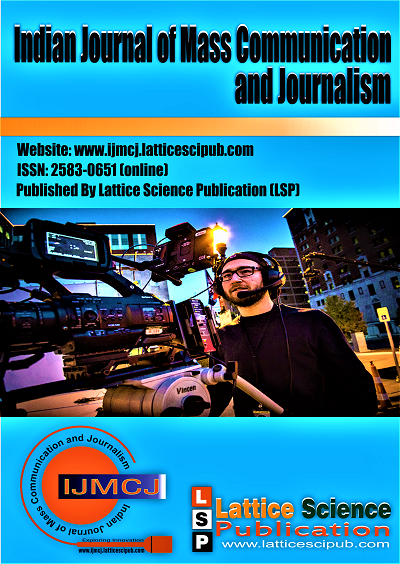Importance of Television Talk-Shows in Classroom Lectures (An analysis using ‘Ek Mulakat’ as Reference)
Main Article Content
Abstract
Teachers in classrooms constantly face a variety of challenges. Poor communication skills, lack of vocabulary, poor grammar, and lack of motivation among students can hamper the teaching and learning process. To deal with these issues, teachers use a variety of methods and teaching materials. This study was conducted to evaluate how teachers can use TV talk shows in their classes to inspire the students. This research study was carried out to understand if talk shows are an effective tool which could be used in classroom lectures. The findings show that using TV talk shows can often excite classes into enthusiastic collaboration in real. Exposing students to visual images of TV talk-shows are more effective than readings alone. They cannot act as substitutes for instructors but can complement readings and lectures. If properly introduced and discussed, TV talk-shows can stimulate inquisitiveness, willingness to learn more and provide frameworks for analysis. However, the focus is on how teachers can make their sessions more interesting and productive by integrating this teaching tool.
Downloads
Article Details

This work is licensed under a Creative Commons Attribution-NonCommercial-NoDerivatives 4.0 International License.
How to Cite
References
Al-Amir, B. A. H. (2017). Female Teachers' Perceptions of Teaching Culture in EFL Classrooms at a Saudi University. English Language
Teaching, 10(6), 28-36 [CrossRef]
Al-Mnaseer, F. A. J. M. (2013). Politics, power and ideology in American comedy late night talk shows: A critical discourse analysis(Doctoral dissertation, Universiti Utara Malaysia).
Bode, L., Vraga, E. K., Alvarez, G., Johnson, C. N., Konieczna, M., & Mirer, M. (2018). What viewers want: Assessing the impact of host
bias on viewer engagement with political talk shows. Journal of Broadcasting & Electronic Media, 62(4), 597-613. [CrossRef]
Bruun, H. (2000). The Aesthetics of the Television Talk-show. Nordicum Review, 243-258. [CrossRef]
Davis, S., & Mares, M. L. (1998). Effects of talk show viewing on adolescents. Journal of Communication, 48(3), 69-86. Esmail, A., Ahmed, M., & Noreen, S. (2015). Why do Pakistani students are reluctant to speak English. Academic Research International, 6(3), 372-383 [CrossRef]
Devadas, M. B., & Ravi, B. K. (2013). Cultural impact of television on urban youth-An empirical study. International Journal of Humanities and Social Science Invention, 2(8), 43-52.
Erler, R. (2010). A Guide to Television Talk. In B. M. Timberg (Ed.), Television Talk: A Hisof Texas Press.
Esmail, A., Ahmed, M., & Noreen, S. (2015). Why do Pakistani students are reluctant to speak English? Academic Research
International, 6(3), 372-383
Ilie, C. (2006). Talk shows. Encyclopedia of Language and linguistics, 2, 489-94. [CrossRef]
Mittell, J. (2003). Audiences talking genre: Television talk shows and cultural hierarchies. Journal of Popular Film and Television, 31(1), 36-
[CrossRef]
Rössler, P., & Brosius, H. B. (2001). Do talk shows cultivate adolescents' views of the world? A prolonged‐exposure experiment.
Journal of communication, 51(1), 143-163. [CrossRef]
Yang, S. (2014). The use of Grice’s cooperative principle in Chinese TV talk shows/Yang Shuwei (Doctoral dissertation, University of Malaya).





